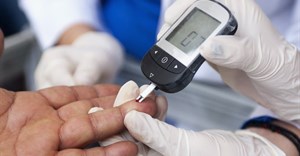Trending
Elections 2024
Gestational diabetes a very real threat

Gestational diabetes affects about one in seven births globally, and may persist as type 2 diabetes or ‘pre-diabetes’, or resolve completely when the pregnancy is over. Women who have had gestational diabetes are at an increased risk for developing type 2 diabetes later in life. A further often unappreciated fact is that children whose mothers had diabetes during their pregnancies have a greater likelihood of becoming obese during childhood and adolescence and of developing type 2 diabetes later in life.
Healthy living, healthy eating
“The number of women being diagnosed with gestational diabetes is increasing around the world, so finding simple and cost-effective ways to prevent women developing it is important,” she says. “In my opinion, the rule of thumb is to choose healthy living during pregnancy. A healthy body means a stronger body, which will not only benefit the baby while in utero but will also assist during the birth and recovery thereafter. Healthy living means eating properly, exercising regularly and doing away with bad habits such as smoking.”
Vanessa recommends limiting sugars and processed foods and rather opting for a variety of real, whole foods. “Gestational diabetes particularly affects women who are overweight or obese. Ideally, women should consider losing excess weight before falling pregnant but, if this isn’t the case, eating sensibly during pregnancy can go a long way to reducing the risk of gestational diabetes,” adds Brown.
Gestational diabetes may end after the baby is born but women with gestational diabetes have a 20 to 50% chance of developing type 2 diabetes in the five to 10 years after childbirth.
“Treatment of gestational diabetes includes healthy eating, exercise and possibly insulin therapy. It is important to monitor blood glucose levels regularly at home to assess whether the ideal targets are being met. You should continue self-monitoring of blood glucose after delivery of your baby. Some women with gestational diabetes will revert to normal glucose tolerance in the weeks following delivery, but with a high risk of developing type 2 diabetes in the future. In others, diabetes remains and treatment should continue,” she says.
If blood glucose levels return to normal on home monitoring without any diabetes treatment, an oral glucose tolerance test (OGTT) should be done in a laboratory six weeks after delivery. “This necessary ‘stress-test’ for your insulin producing beta-cells assesses for any abnormality in glucose tolerance. It is done by checking the fasting blood glucose level, and if indicated by that result, drinking a solution containing 75 g of glucose. The blood glucose response to the oral glucose challenge is then measured two hours later.”
If this test is normal, Brown recommends that screening for diabetes should be repeated annually. “To reduce the risk of developing type 2 diabetes in the future and to keep those annual tests negative, it is vital to continue with healthy eating, exercise and maintenance of a healthy weight range. Remember your child needs you to be healthy,” she concludes.
Facts worth considering
World Diabetes Day 2017 is coming up on 14 November and this year’s theme is Women and diabetes - our right to a healthy future. One of the key focus areas is pregnant women and improved access to screening, care and education to achieve positive health outcomes for mother and child.
Supporting facts:
• One in seven births is affected by gestational diabetes.
• International Diabetes Federation (IDF) estimates that 20.9 million or 16.2% of live births to women in 2015 had some form of hyperglycaemia in pregnancy. Approximately half of women with a history of gestational go on to develop type 2 diabetes within five to ten years after delivery.
• Half of all cases of hyperglycaemia in pregnancy occur in women under the age of 30.
• The vast majority of cases of hyperglycaemia in pregnancy were in low- and middle-income countries, where access to maternal care is often limited.
What needs to be done:
• Type 2 diabetes prevention strategies must focus on maternal health and nutrition and other health behaviours before and during pregnancy, as well as infant and early childhood nutrition.
• Antenatal care visits during pregnancy must be optimised for health promotion in young women and early detection of diabetes and Gestational Diabetes Mellitus (GDM).
• Screening for diabetes and GDM should be integrated into other maternal health interventions and services at primary healthcare level to ensure early detection, better care for women and reduced maternal mortality.
• Healthcare workers should be trained in the identification, treatment, management and follow up of diabetes during pregnancy.















